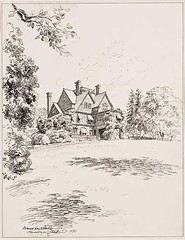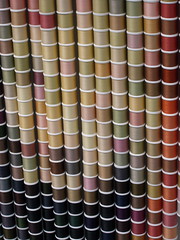! American Artist Get It Now!
Up to 90% Off Subscriptions Here! Huge Selection and Savings - Shop Now.
Sunday, April 1, 2012
Wednesday, March 28, 2012
Wednesday, February 29, 2012
Whirlpool 4396841P PUR Push Button Side-by-Side Refrigerator Water Filter, 2-Pack
!: The Best Places to Buy Whirlpool 4396841P PUR Push Button Side-by-Side Refrigerator Water Filter, 2-Pack save
Make sure the water and ice from your refrigerator is as clean and fresh tasting as possible by replacing its water filter. This Whirlpool PuR water filter is used in Whirlpool, KitchenAid, Maytag, Amana, and JennAir side-by-side refrigerators with filter access in the base grille.


It's NSF-certified to reduce cysts, particulates (class I), lead, mercury, and more. (The contaminants or other substances removed or reduced by this water filter are not necessarily in all users' water.) While it effectively removes contaminants from your water and ice, this filter also lowers the taste and odor of chlorine while retaining beneficial fluoride.
For the highest quality water and ice, your refrigerator's water filter needs to be changed over a period of time as its effectiveness at cleaning the water is reduced. For optimal results, you should replace this refrigerator water filter every 6 months to ensure clean, safe drinking water and ice.
Your refrigerator will even remind you when to change its filter, turning on an indicator light found near the water dispenser. Changing the filter is easy--just locate the old filter, twist and turn it until it becomes loose, then pull the old filter out and replace with the new filter.
This model (4396841) can be used to replace the following models of water filter:
- 4396842
- 8212650

Replacing Your Water Filter
For side-by-side refrigerators with filter access in the base grille, follow these instructions for replacing your filter:
- Push the eject button, then pull the filter cap. Do not twist cap.
- Remove the filter cap by turning it counter clockwise. Set aside cap. Discard old filter.
- Remove the packaging and O-ring covers from the new filter.
- Align arrows on the cap and new filter. Turn clockwise to snap in place.
- Push filter into the base grill until the eject button pops. Gently tug on cap to ensure it is snug.
- Flush the water system until a total of 3 gallons (12 L) has been dispensed.
- Whirlpool 4396710P KitchenAid PUR Push Button Cyst-Reducing, Side-by-Side Refrigerator Water Filter, 2-Pack
- Whirlpool 4396710T Push Button Cyst-Reducing Side-by-Side Refrigerator Water Filter, 3-Pack
- Whirlpool 2260518B PUR Refrigerator Water Filter Cap - Black
- Whirlpool 4396508P KitchenAid Maytag Side-by-Side Refrigerator Water Filter, 2-Pack
- Cuisinart DCC-RWF1 Replacement Coffeemaker Water Filters, Set of 2
Hose Sleeve, Sweep Hose, Gray, (4 Pack) Llh07pm... Save You Money
Friday, January 20, 2012
Thursday, December 29, 2011
Saturday, December 24, 2011
Saturday, December 3, 2011
 |
 |
 |
 |
 |
 |
 |
 |
Sponsor Links
- Nice Watches Cheap
- Products Discount Today
- Great Deal Sale
- Non Toxic Mattress Purchase
- Memorex : Disc Dvd R Double Layer 8.5gb 8x 15/pk Spindle15/pk Spindle... Refurbished
- Best Buy Gourmet Nuts
- Motorcycle Battery Charger Discounted
- Azure 23mil Sand Poly 8.75 X 11.25 Binding Covers - 25pk... Order
- Yamaha Clavinova Connection Starlights Series starlights Highlights... This Instant
- Who Sells Baby Bumbo



